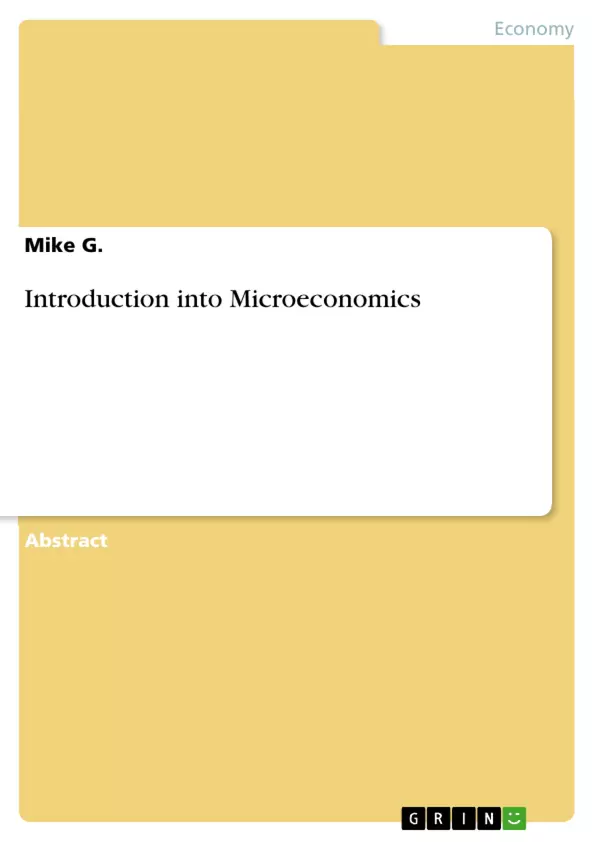This text deals with the basic principles and theories of microeconomics. It describes the connection between demand and supply in perfect and imperfect markets to explain different, observed outcomes with the theoretical approaches.
It is somewhat advanced to understand, therefore a certain level of knowledge about the market economy is recommended, but not absolutely necessary. In particular, market types like pure-competition, monopoly, and monopolistic competition are mentioned and analyzed as well as cost minimization and profit maximization issues for each type. Various graphs underline the text and help to deliver and understand the message.
Inhaltsverzeichnis (Table of Contents)
- Session One: A Simple Economic Model
- Session Two: Budget and Preferences
- Budget
- Sessions Three and Four: Utility, Demand and Choice
- Lectures 6 and 7: Consumer's surplus, market demand and equilibrium
- Lectures 8 & 9: Technology, profit maximization and cost minimization
- Lectures 10 and 11: Costs and Supply
Zielsetzung und Themenschwerpunkte (Objectives and Key Themes)
This text introduces the fundamental principles and theories of microeconomics, explaining the relationship between demand and supply in both perfect and imperfect markets. It explores various market types, including pure competition, monopoly, and monopolistic competition, while examining issues related to cost minimization and profit maximization in each. The text aims to provide a theoretical framework for understanding observed economic outcomes.
- Demand and Supply Relationships
- Market Structures (Perfect Competition, Monopoly, Monopolistic Competition)
- Cost Minimization and Profit Maximization
- Consumer Behavior and Utility
- Market Equilibrium and Welfare
Zusammenfassung der Kapitel (Chapter Summaries)
Session One: A Simple Economic Model
This session introduces a basic economic model using the apartment market as an example. It emphasizes the importance of model simplification and distinguishes between exogenous and endogenous variables. The concept of rationality and equilibrium is introduced, with a focus on perfect market conditions. The session also explores the impact of rent control and monopoly on market equilibrium.
Session Two: Budget and Preferences
This session focuses on the economic behavior of consumers, defining economics as the study of human behavior in relation to scarce resources with alternative uses. It introduces the concept of budget constraints and preferences, explaining how these factors influence consumer choices.
Schlüsselwörter (Keywords)
Microeconomics, demand, supply, market equilibrium, perfect competition, monopoly, monopolistic competition, cost minimization, profit maximization, consumer behavior, utility, budget constraint, preferences, Pareto efficiency.
- Citar trabajo
- Mike G. (Autor), 2017, Introduction into Microeconomics, Múnich, GRIN Verlag, https://www.grin.com/document/366936



